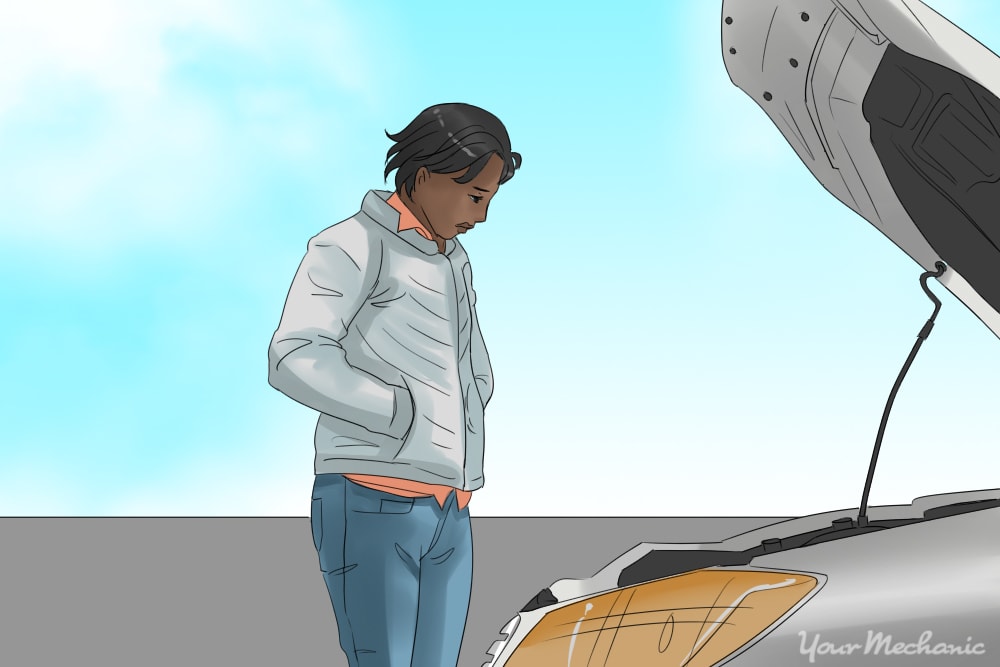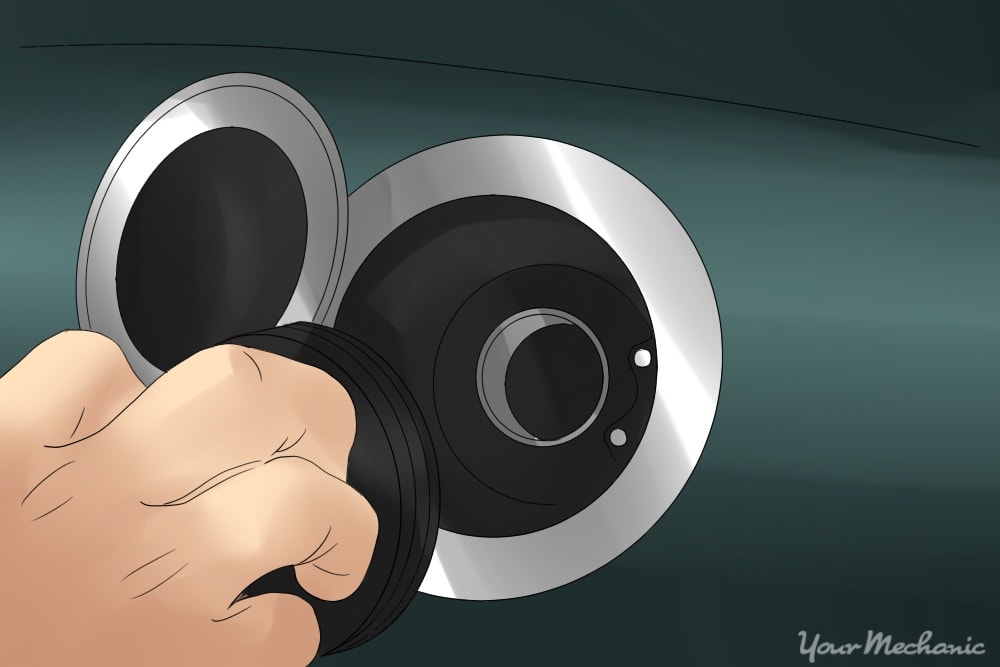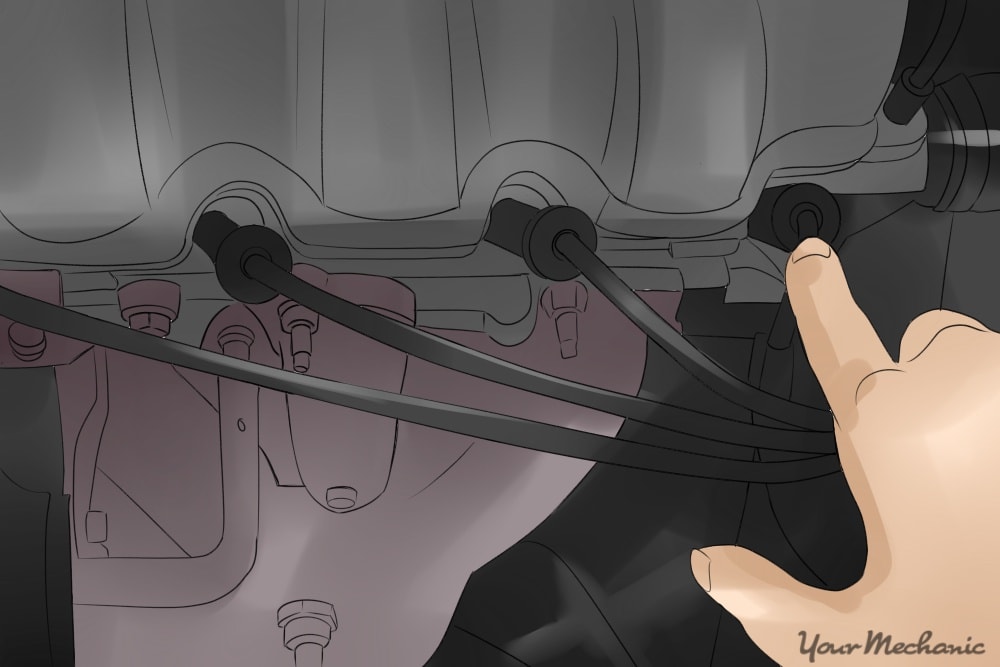

Whether at home, work, school or out on a shopping trip, it's never a pleasant situation to sit down in your driver’s seat and find your vehicle won't start. It can feel like an overwhelming experience when you're not only trying to get the car started, but also trying to determine the cause.
Luckily, there are usually three common areas that can be investigated if you want to be proactive in discovering why your vehicle won’t start. The first area to be looked at involves testing the battery and the connections to the starter. The second is the fuel and fuel pump and the third, and usually the most common culprit, is issues with the spark to the engine.
Part 1 of 3: The battery and starter
Materials Needed
- Digital multimeter
- Donor car
- Jumper cables
The most common reasons behind a car not starting usually reside with the vehicle's battery and/or its starter. Starting our investigation here will allow us to get to a solution more quickly on why the car is not starting.
To investigate a dead battery, we will want to start with the key turned to the “on” position. Go ahead and turn on the car’s headlights. Notice if they are strong and bright, if they are weak and dim, of if they are off completely. If they are dim or not illuminating, than the vehicle may have a dead battery. A dead battery can be jumped back to life with jumper cables and another car by following these steps.
Step 1: Park both vehicles close. Park the donor vehicle close to the vehicle with the dead battery. You will want both engine compartments to be near to each other so the that jumper cables can reach each battery end to end.
Step 2: Safely attach the clamps to the terminals. With both vehicles off, open each hood and locate the battery for each car.
Have a friend hold one end of the jumper cables. Be sure that the two clamps do not touch each other.
Connect the red clamp to the positive battery terminal then the black clamp on the negative terminal.
Step 3: Now do the same for the donor vehicle. After the jumper cables are connected, start the donor vehicle and make sure all the accessories such as the heater/air conditioner, stereo, and various lights are all turned off.
- These extras create a load on the charging system, often making it difficult to jumpstart a dead car.
Step 4: Allow the dead battery charge. Let the donor car continue to run for a few minutes. This is what allows the dead battery to charge.
- After a few minutes, turn the key in the receiving car to the “on” position (do not start yet). Ensure that all of the accessories are turned off as well.
Step 5: Start the receiving vehicle. Finally, start the receiving vehicle and allow it to run. While it runs, have someone assist you in removing the jumper cables from each vehicle. Be sure to remove the negative clamp first, then the positive clamp.
Step 6: Drive the car for 15 minutes. Take the vehicle with the newly charged battery for a 15 minute drive. Doing this should allow the alternator to charge the battery fully.
Step 7: Have the battery tested. It’s a good idea to have your battery tested soon after this jump start to determine if it needs to be replaced.
- Tip: A certified mechanic will be able to check out your battery if you do not have a battery tester. If the vehicle has a good battery but the engine does not turn over, the starter may be the culprit and will need to be replaced.
The starter can be tested with a digital multimeter placed on the signal wire between the starter and the battery. Have a friend turn the key and attempt to start the vehicle. While attempting to start, this wire should reveal the battery voltage it is receiving. If your power probe or multimeter is in fact displaying a battery voltage, you can rest assured that the wiring to the starter is good. If the starter is just clicking or not making any noise, then the starter is the culprit.
Part 2 of 3: Fuel and fuel pump
Step 1: Test the fuel in the vehicle. Turn the key to the “on” position and observe the gas gauge. In most cases, this will tell you how much fuel you have left in the tank.
- Note: Sometimes the gas gauge can fail and and show that you have more gas then you really have. If you suspect low fuel is the issue, grab yourself a gas can and add a gallon of gas to the vehicle to see if it starts. If the vehicle does start, then you have discovered why the car is not starting: the gas gauge was inaccurate, it will need to be repaired.
Step 2: Test the fuel pump. Remove the gas cap and listen for the sound of the fuel pump turning on when you turn the key to the “on” position.
- This step may require the help of a friend to turn the key while you listen.
Sometimes it can be hard to hear the fuel pump, so using a fuel pressure gauge can show if the fuel pump is working and also tell us if it is providing enough fuel to the engine. Most modern vehicles have an access port to plug the fuel pressure gauge into.
Observe the fuel pressure gauge while starting the vehicle. If there is zero pressure, the wiring for the fuel pump will need to be tested to make sure power is going to the fuel pump. If there is pressure, compare your readings to the manufacturer spec to see if it is in range.
Part 3 of 3: Spark
Step 1: Check your spark plug. If you have adequate fuel then you need to next check for spark. Open the hood and locate the the spark plug wires.
Remove one spark plug wire and use a spark plug socket and ratchet to remove one spark plug. Inspect the spark plug for signs of failure.
If the white porcelain is cracked or if the spark plug gap is too large, then the spark plugs need to be replaced.
Step 2: Test with a new spark plug. To verify if the vehicle is receiving spark, take a brand new spark plug and insert it into the spark plug wire.
- Touch the end of the spark plug to any bare metal surface to ground the spark plug. This will complete the circuit.
Step 3: Crank the engine. Have a friend crank the engine while you hold the spark plug to the ground connection.
- Warning: Do not physically touch the spark plug with your hand or you can get shocked. Be sure to hold the rubber end of the spark plug wire to prevent getting shocked. If the vehicle has no spark, it is possible the ignition coil or distributor is the culprit and will need to be tested.
While the three most common areas have been provided, there really is quite a large number of reasons that could prevent a vehicle from starting. Further diagnostics would be required to determine which component is preventing the vehicle from starting and what repairs are necessary to get your vehicle back on the road.






